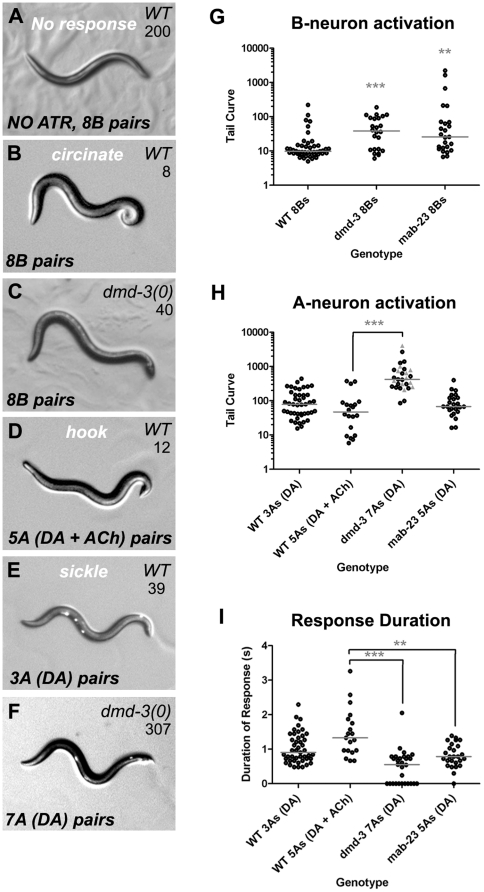Figure 5. Ray neuron-induced tail-curl postures are abnormal in dmd-3 and mab-23 mutants.
A–F. Tail postures generated by ChR2-YFP-expressing transgenic males after ChR2 activation with a blue light pulse (anterior left, posterior right). The number of ray neurons activated, their type and neurotransmitter fate (DA or ACh for the A-neurons) are indicated. The Tail Curve value for each male posture is indicated in the upper right of each image (see Materials and Methods for derivation). Except for A, all males shown were grown in the presence of ChR2 co-factor all-trans-retinal (ATR). “Circinate”, “sickle” and “hook” refer to the shape of the tail posture. A. A wild type (WT) transgenic male grown without ATR (NO ATR) shows no change in tail posture when pulsed with blue light because ChR2 is non-functional in the absence of ATR. In A–F, the transgenes used were as follows: ppkd-2::ChR2-YFP ( A–C ), ptba-9::ChR2-YFP ( D ), pdat-1::ChR2-YFP ( E , F ). The bright fluorescent spots in E and F correspond to expression of co-transformation marker UNC-122::GFP in coelomocytes. G, H. Quantification of Tail Curves generated by males after ChR2-mediated activation of ray neurons. Tail Curve values (Y-axis, log scale) were calculated for individual transgenic males expressing ChR2-YFP in the neurons indicated (X-axis) [28], (Materials and Methods). Each point corresponds to a single male: Black circles (responders): tail curl response with or without backing; Grey triangles (non-responders): no change in tail posture, forward locomotion uninterrupted. I. The duration of the ChR2-mediated A-neuron tail curl response for males shown in H (see Materials and Methods for derivation). In G–I the results of Nonparametric 1-way ANOVA (Kruskal-Wallis) are shown. Median, grey bars. Significance *** p<0.001; ** p<0.01; * p<0.05.

